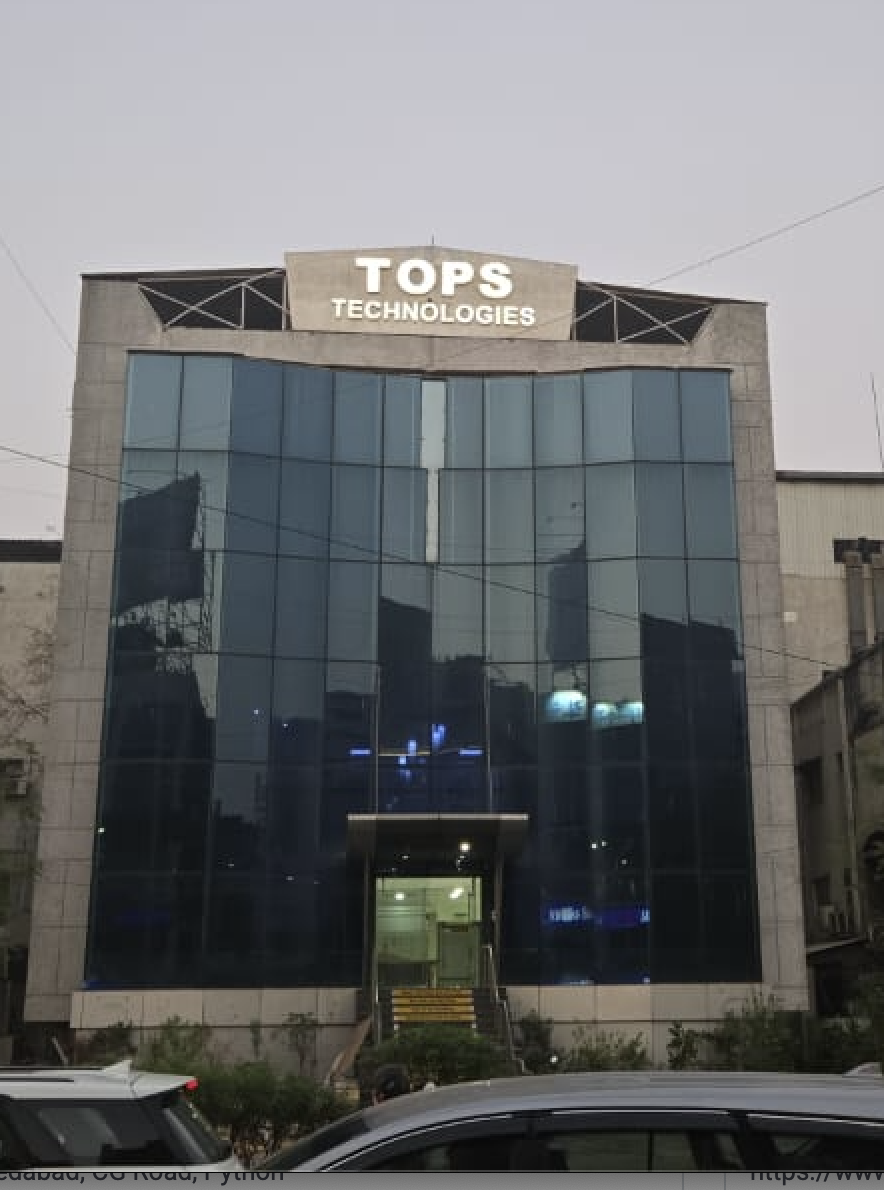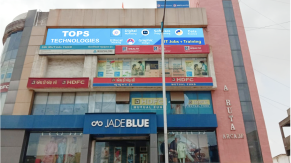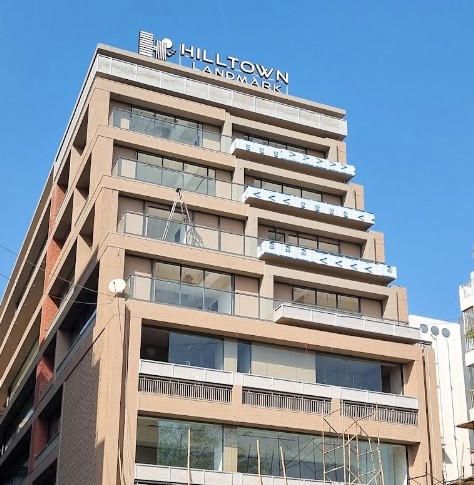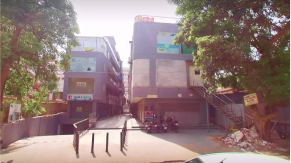Our Facts and Figures
A Front-End Developer Course at TOPS Technologies provides technical expertise in HTML, CSS, JavaScript, React, and Angular, making you a proficient web developer. With limited student batches, Personalised attention, highly qualified teachers, and NSDC/Skill India recognition, our course offers diverse career opportunities. Join and benefit from us: 1 Lac+ student placed, 3000+ company tie-ups, and 50+ industry courses.
1 Lac+
Student Placed
3000+
Companies TieUp
19+
Offices in India
50+
Industry Courses
Get 100% Job Assistance by enrolling in Certified Front-End Developer Course
Key Highlights
Limited Students Batch
Personalised Attention
Highly Qualified Teachers
Flexible Batch Timings
Interactive Learning
Live Projects
Career Support
Job Oriented Training
Front End Developer Course Highlights
Dive into the world of creating interactive, intuitive web designs with this Front End Developer Course. Front End Web Development is the heart of any web project, responsible for crafting the visual components that keep users engaged and satisfied.
Students will embark on a learning journey, diving deep into the essence of crucial languages such as HTML, CSS, and JavaScript.
This course promises not just theoretical knowledge but also extensive practical exposure, preparing students to tackle real-world challenges with assurance and expertise.
In the burgeoning tech ecosystem, opt for excellence with the Front End Developer Course.
This course, rooted in practicality and relevance, stands as a beacon, guiding aspiring developers toward a promising and exciting career in front-end development.
Unlock Your Future with Front End Developer Training and Placement
Here is how this course will help you:
Launch Your Career
Dive into the world of web development with this Front End Developer training.
Gain hands-on experience and real-world skills to secure your dream job.
Job-Ready Skills
Acquire in-demand skills in HTML, CSS, JavaScript, and more, tailored for modern web development.
Master responsive design, web performance optimisation, and user experience principles.
Career Growth
Elevate your career prospects with this Front End Developer Course with Job Guarantee through placement assistance.
Learn from industry experts and build a portfolio that stands out to potential employers.
Practical Learning
Engage in interactive projects and coding challenges to reinforce your knowledge.
Stay updated with the latest industry trends and technologies.
Seamless Placement
This comprehensive program includes job placement assistance and interview preparation.
Connect with our network of hiring partners and kickstart your career.
Don't miss the opportunity to become a sought-after Front End Developer. Enroll now in this Front End Developer Training and Placement program for a brighter future!
Earn The Most Respected Front End Developer Certification
Elevate your career with this comprehensive front-end developer course, recognized as the best certification for front-end developers.
Course Features:
- Comprehensive Learning: Master HTML, CSS, and JavaScript, with a strong emphasis on responsive web design.
- Certification: Earn a prestigious certification upon completion, validating your skills to employers.
- Engaging Video Lectures: Access expert-led video lectures for clear, visual learning.
- Interactive Quizzes: Reinforce knowledge with quizzes after each module and track your progress.
- Supportive Forum: Connect with peers and instructors for answers and discussions.
- Real-World Projects: Apply your skills to hands-on projects, enhancing your portfolio.
- Career Guidance: Receive job placement assistance and interview preparation.
- Flexible Learning: Access the course from anywhere, at your pace.
Enroll today and take your first step towards a rewarding front end development career.
Who Should Enroll in This Course?
This course is tailor-made for individuals eager to acquire essential Front End Developer skills, especially those who are beginners or at the entry-level of their careers. Whether you're a:
- Fresh Graduate: Kickstart your career with a strong foundation in front-end development.
- Creative Enthusiast: Turn your passion for web design into a profession.
- Entrepreneur: Enhance your website-building capabilities for your business.
- Self-Starter: Learn the fundamentals of web development to take on freelance projects.
- Tech-Curious: Explore the world of coding and web design for personal growth.
No matter your background, this course offers a beginner-friendly approach to building essential front-end developer skills.
What You’ll Learn?
- Website Designing - HTML5
- JAVASCRIPT BASIC & DOM
- JQuery Basic, Effects & Advanced
- Bootstrap basic & Advanced
- Introduction and Code Quality
- Data types and objects
- Document, Event and Controls
- JavaScript Essentials
- React - Components, State, Props
- Lists and Hooks
- React - Styling & Advance React
Career Opportunities After Completing This Front-End Developer Course
Here are the most high-paying jobs you can get after the course completion:
Front End Developer
As a front end developer, you will be responsible for creating the user interface and user experience of websites. You'll use HTML, CSS, and JavaScript to bring designs to life, ensuring seamless navigation and optimal performance.
Approximate Salary: The front end developer salary is ₹450,000 to ₹1,200,000, depending on experience and the complexity of tasks.
Web Designer
Web designers focus on the visual aspects of websites, creating layouts, colour schemes, and graphics to enhance user engagement. With front end development skills, you can excel in both design and functionality.
Approximate Salary: ₹350,000 to ₹900,000, contingent on experience and task intricacy.
UI/UX Designer
UI/UX designers concentrate on optimising user interfaces for exceptional user experiences. Your knowledge of front end development will enable you to collaborate effectively with designers and developers, bridging the gap between aesthetics and functionality.
Approximate Salary: Around ₹350,000 to ₹900,000, depending on experience and project complexity.
Full Stack Developer
By complementing your front end skills with back end development knowledge, you can become a full stack developer. You'll work on both the client and server sides, handling a wider range of responsibilities in web development projects.
Approximate Salary: Roughly ₹450,000 to ₹1,000,000, influenced by experience and task intricacy.
Freelance Web Developer
As a freelance web developer, you can enjoy the flexibility of working on various projects for different clients. With front end development expertise, you can offer services such as website creation, optimisation, and maintenance.
Approximate Salary: Varies widely based on project demand and expertise, ranging from ₹300,000 to ₹1,500,000 or more annually.
The Path to High-Paying Jobs: This Front End Development Course with Placement
In today's competitive job market, the right skills can be your ticket to high-paying positions.
- In-Demand Skills: Master the vital front end development languages and techniques employers crave.
- Certification: Secure your path to high-paying roles with a prestigious certification that validates your expertise.
- Practical Experience: Build a robust portfolio by working on real-world projects that showcase your abilities to potential employers.
- Job Placement Assistance: Benefit from this comprehensive job placement support, ensuring you're well-prepared for interviews and job applications.
- Industry Insights: Stay ahead of the curve with insights into the latest industry trends and technologies, making you a top candidate for high-paying positions.
- Networking Opportunities: Connect with industry professionals and peers, opening doors to high-paying jobs through recommendations and referrals.
By enrolling in this best online front-end developer course, you're not just acquiring skills; you're investing in your future earning potential.
Rated As One Of The Best Online Course for Front End Development
This online course provides comprehensive front-end development skills, tailored to both beginners and experienced individuals. Gain expertise in HTML, CSS, and JavaScript, ensuring you're job-ready.
Flexible Learning
You can access this course from anywhere, anytime.
Learn at your pace while juggling other commitments.
Placement Assistance
Secure your career with our job guarantee. We assist you in finding the right job, even in a competitive market.
Join our satisfied graduates who've landed lucrative positions.
Expert Guidance
Benefit from the mentorship of industry experts who guide you through the complexities of front end development.
Get answers to your questions and insights into the latest industry trends.
Student Views: Hear What Our Graduates Have to Say
Rahul Sharma ⭐⭐⭐⭐⭐
"This course changed my life! The practical approach and job guarantee made all the difference."
Priya Patel ⭐⭐⭐⭐⭐
"I was a complete beginner, but this course guided me step by step. I got a high-paying job within months of completion!"
Amit Singh ⭐⭐⭐⭐
"The flexibility of online learning and expert mentorship were invaluable. Highly recommended!"
Neha Kapoor ⭐⭐⭐⭐⭐
"I had my doubts, but this course delivered on its promises. I'm now a confident front end developer with a fantastic job."
Kunal Mehta ⭐⭐⭐⭐
"The job placement assistance was a game-changer. I couldn't have asked for a better start to my career."
Why Does This Front End Developer Course Stand Out?
We maintain small class sizes to ensure every student receives personalised attention. Our highly qualified instructors are dedicated to your success, providing tailored support to help you thrive.
- Flexible Scheduling: Choose batch timings that suit your schedule, making it convenient to balance learning with other commitments.
- Interactive Learning: Engage in dynamic, interactive sessions that deepen your understanding of front end development.
- Hands-on Projects: Apply your Front End Developer Skills to real-world projects, building a robust portfolio that sets you apart in the job market.
This course is designed for job readiness, offering placement assistance and interview preparation to kickstart your career.
Why is TOPS Technologies the Best Choice for Beginners and Entry-Level Candidates?
“We empower beginners and entry-level candidates to not just start a career but also secure a significant salary increase, with an average hike of 40%.”
“We have a track record of helping our students secure top-paying jobs, with some achieving an impressive starting salary of ₹4.5 lacs.”
“Benefit from our extensive network of over 3000 hiring partners, ensuring a wide array of job opportunities and industry connections.”
Globally Accepted: Your Path to Success
This course is endorsed by the NSDC, a testament to its quality and alignment with national skill development goals.
- Certification by NSDC SkillIndia: Upon completion, you receive a prestigious NSDC Skill India certification, recognized nationally and internationally.
- Valid for All Jobs and College Training: Your certificate opens doors to a wide range of job opportunities and further educational pursuits.
- International Recognition: Join the league of professionals with international recognition, as our program equips you to excel on the global stage.
Choose this Front End Developer Professional Certificate to gain a qualification that not only serves your career goals but also carries national and international prestige.
Enroll In Our Course!!
Our online Front-End Developer course has empowered countless individuals to kickstart their careers! The virtual learning environment has enabled us to reach aspiring developers from various regions. Nevertheless, we understand the importance of hands-on experience, which is why we also offer in-person classes.
Our Front-End Developer Course in Surat, Front-End Developer Course in Rajkot, and Front-End Developer Course in Ahmedabad and other cities are designed to bridge the gap between theory and practical application in the real world.
This course isn't just about helping you secure a job; it's about shaping you into a proficient professional.
FAQS
What is front-end development?
Front end development, also known as client-side development, involves creating the user interface and user experience of a website. It focuses on the visual elements, design, and functionality that users interact with directly.
What are some common technical questions in a front-end developer interview?
Typical technical questions may include topics like HTML, CSS, JavaScript, responsive design, and web performance optimisation.
How can I prepare for behavioral questions in a front-end developer interview?
To prepare for behavioral questions, focus on your problem-solving skills, teamwork, and your ability to adapt to new technologies and trends.
What should I include in my front-end developer resume to make it stand out?
Include a summary highlighting your key skills and experiences, showcase your projects with measurable results, and mention any relevant certifications or training.
What is the average salary of a front-end developer in India?
The average front-end developer salary in India can vary based on experience and location, but it typically ranges from ₹400,000 to ₹1,200,000 per annum.
40%
Average Salary Hike
4.5 Lacs
Highest Salary
3000+
Hiring Partners
Join Our Free Upcoming Webinar
Motion Graphics and Animation in Design
14 Dec 2025, 11:00 AM
Trainer
Saurabh Verma
(Sr. Technical Trainer)
Career in Data Science
14 Dec 2025, 12:30 PM
Trainer
Dhrumil Joshi
(Sr. Technical Trainer)
How to Protect your Website from Hackers
14 Dec 2025, 02:00 PM
Trainer
Faruk Pathan
(Sr. Technical Trainer)
How to Create Dynamic Websites in Python with Django
14 Dec 2025, 04:00 PM
Trainer
Sanket Chauhan
(Sr. Technical Trainer)
Building a Full Stack Application from Scratch
13 Dec 2025, 10:30 AM
Trainer
Rahul Sanghavi CG
(Sr. Technical Trainer)
How to Get a Job with Internship
13 Dec 2025, 12:30 PM
Trainer
Jigar Thakkar
(Sr. Technical Trainer)
UI / UX Design - Role of UI / UX Design in Websites' Success
13 Dec 2025, 02:00 PM
Trainer
Gaurav singh tomar
(Sr. Technical Trainer)
Career in Cloud Computing
13 Dec 2025, 04:00 PM
Trainer
Faruk Pathan
(Sr. Technical Trainer)
Front End Developer Course Curriculum
Download Curriculum- Student Intro , Career Center Login ,What is Internet, HTTP/HTTPS, WWW, Domain name and Top Domain name
- SEO, What is HTML, What is Text Editor, Web Browser, Downloading Text Editor , HTML Structure, First Program in HTML
- 1) HTML Introduction 2) HTML Getting Started 3) HTML Elements 4) HTML Attributes 5) HTML Basic Tags
- 1) HTML Doctypes 2) HTML Layout 3) HTML Head 4) HTML Meta 5) HTML Scripts
- Practical Examples: 1) Create any simple web page to display your 2) Importance of meta tag and Doctypes
- Tags and self Closing Tags, Basic Tag , Attribute and Events, Marquee Tag
- HTML – Meta Tags, HTML – Comments, HTML – Images, HTML – Tables, HTML – Lists, HTML – Text Links, HTML – Image Links
- HTML Headings HTML Paragraphs HTML Links HTML Text Formatting HTML Styles HTML Images
- HTML – Frames, HTML – Iframes, HTML – Blocks, HTML – Backgrounds, HTML – Colors, HTML
- Anchor Tag, Img Tag, Image Mapping
- HTML – Fonts, HTML – Forms, HTML – Embed Multimedia ,HTML – Marquees, HTML – Header, HTML – Style Sheet, HTML – Javascript ,HTML – Layouts
- List Tag, Tables, Forms
- HTML – Tags Reference, HTML – Attributes Reference, HTML – Events Reference, HTML – Fonts Reference, HTML – ASCII Codes, ASCII Table, Lookup, HTML – Color Names, HTML – Entities, HTML – Fonts, Ref HTML – Events, Ref MIME Media Types, HTML – URL Encoding L
- Practical Examples: 1) Create simple Doc and display your name using different heading tag 2) Create link for open 3) Create document using all text formatting tags
- HTML online editor
- HTML Tables HTML Lists HTML Forms HTML Iframes
- Practical Examples: 1) Create simple table 2) Create time table for your school 3) Create table with colspanrowspan example 4) Create invoice using table 5) Create hotel 6) Create index page for your book. 7) Create list with different categories.
- Practical Examples: Create registration form with all fields and validation
- 1) CSS 2) In-line CSS Internal Style External Style Sheet @import Style Sheet 3) CSS Class CSS ID
- What is CSS How to Implement CSS Class and ID Width and Height Css Unit Box Model (Margin,padding,Border) and create basic template design
- Practical example : Create page with difference color text
- CSS Selectors , Pseudo Classes and Elements , Float and Clear and Alignment , Font Styling , Opacity and Visibility , Line Height
- 1) CSS Text 2)CSS Font 3) CSS Background 4) CSS Links 5) CSS Lists 6) CSS Display 7) CSS Visibility
- Creating Header of Website , Outline , Background , Counter increment , Counter reset ,Cursor and Overflow
- Position , Creating Submenu , Border Radius, Transform , Animation , Font Awesome Icons
- 1) CSS Layout Model 2) CSS Border 3) CSS Margin 4) CSS Padding 5) CSS Outline
- Font Family Through Google Font , import fontface rule ,FlexBox
- 1) CSS Float 2) CSS Align 3) CSS Position 4) CSS Element Size 5) CSS Layer
- Practical Example : Create image gallery
- 1) CSS Pseudo Class Selector 2) CSS Pseudo Element Selector
- CSS Properties 1) Background, 2) border 3) bottom 4) caption-side 5) clear 6) clip 7) color 8) content
- Practical Example: Create Menu with logo at left side and contact info at right side using clear effect
- 1) counter-increment 2) counter-reset 3) cursor 4) direction 5) display 6) empty-cells
- Practical Example: 1) Create submenu list using counter
- 1) float 2) font 3) height 4) left 5) letter-spacing 6) line [height, style, style-7) image, style-position, 8) style-type] 9) margin 10) outline 11) overflow 12) padding
- 1) page-break 2) position 3) quotes 4) right 5) table-layout 6) text 7) top 8) vertical-align 9) visibility 10) white-space 11) width 12) word-spacing 13) z-index
- Practical Example: wireframe layout for your template using div
- Media Query (For Responsive Website) , Creating a Responsive Website
- Validate a Website, Hosting a website with free domain name, Column , Clippath , Gradient Color , Filter, Border Image
- HTML5 Tags, HTML5 Input and Attribute
- Audio and Video, Semantic Element in HTML5
- Canvas, Svg and Display Grid
- 1) JS Introduction 2) JS Getting Started 3) JS Syntax 4) JS Variables 5) JS Generating Output 6) JS Data Types 7) JS Operators 8) JS Events 9) JS Strings 10) JS Numbers 11) JS If, Else 12) JS Switch Case
- What is Javascript, Creating First Javascript Program, Way to apply Javascript , Event in Javascript , How to select Tag Classes and Id
- Practical Example: 1) Create program for input color and output that code 2) Create program for pattern using loop
- Functions, Alert ,Confirm , Prompt , Addition of Two Number , Hide and Show Password
- a) JS Arrays b) JS Sorting Arrays c) JS Loops d) JS Functions e) JS Objects
- How to apply CSS using Javascript, Image Changing
- Practical Example: 1) Create function Finding the Maximum and Minimum Value in an Array 2) Create pyramid pattern program
- If Else Statement, Javascript Form Validation
- JAVASCRIPT & DOM 1) JS DOM Nodes 2) JS DOM Selectors 3) JS DOM Styling 4) JS DOM Get Set Attributes 5) JS DOM Manipulation 6) JS DOM Navigation
- How to see Trafic in Our Website
- Practical Examples: 1) Get input data and perform different operations 2) Make dynamic CSS by click
- JAVASCRIPT ADVANCED 1) JS Date and Time 2) JS Math Operations 3) JS Type Conversions 4) JS Event Listener 5) JS Regular Expressions 6) JS Error Handling
- Practical Example: Create custom Validation
- jQuery Basic a) jQuery Introduction b) jQuery Getting Started c) jQuery Syntax d) jQuery Selectors e) jQuery Events
- What is JQuery , Downloading JQuery File , First Program in JQuery
- Practical Example: Change CSS
- JQuery Syntax , Query Selector, Hide , Slide , Fade Effect in JQuery
- JQuery Effects 1) jQuery Show/Hide 2) jQuery Fade 3) jQuery Slide 4) jQuery Animation 5) jQuery Stop 6) jQuery Chaining 7) jQuery Callback
- How to Apply CSS Using JQuery, How to Add Class and Remove Class in Jquery , JQuery Animation
- Practical Example: Create slider with animation
- Filter using JQuery , JQuery Slider Plugin , Validation Plugin
- JQuery Advanced 1) jQuery Traversing 2) jQuery Ancestors 3) jQuery Descendants 4) jQuery Siblings 5) jQuery Filtering 6) jQuery Load 7) jQuery No-Conflict
- Zoom Plugin, Now Make Your Existing Website Dynamic with Javascript and JQuery
- Bootstrap Basic 1) Bootstrap Introduction 2) Bootstrap Getting Started 3) Bootstrap Grid System 4) Bootstrap Fixed Layout 5) Bootstrap Fluid Layout 6) Bootstrap Responsive Layout
- Practical Example: Create Navigation Menu
- 1) Bootstrap Typography 2) Bootstrap Tables 3) Bootstrap Lists 4) Bootstrap List Groups 5) Bootstrap Forms 6) Bootstrap Custom Forms 7) Bootstrap Input Groups 8) Bootstrap Buttons 9) Bootstrap Button Groups
- Practical Example: Create login registration form
- 1) Bootstrap Images 2) Bootstrap Cards 3) Bootstrap Media Objects 4) Bootstrap Icons 5) Bootstrap Navs 6) Bootstrap Navbar 7) Bootstrap Breadcrumbs 8) Bootstrap Pagination 9) Bootstrap Badges 10) Bootstrap Progress Bars 11) Bootstrap Spinners 12) Bootstra
- Practical Example: 1) Create image gallery 2) Create model for login Product list page with pagination
- Bootstrap Advanced 1) Bootstrap Modals 2) Bootstrap Dropdowns 3) Bootstrap Tabs 4) Bootstrap Tooltips 5) Bootstrap Popovers 6) Bootstrap Alerts 7) Bootstrap Stateful Buttons 8) Bootstrap Accordion 9) Bootstrap Carousel 10) Bootstrap Typeahead 11) Bootstra
- Practical Example: Create your project website using bootstrap
- Introduction to JavaScript,Code editors,Developer console
- Fundamentals,Hello, world!,Code structure,The modern mode, “use strict”,Variables,Data types
- Interaction: alert, prompt, confirm,Type Conversions,Basic operators, maths,Comparisons,Conditional branching: if, ‘?’
- Logical operators,Nullish coalescing operator ‘??’,Loops: while and for,The “switch” statement, Functions, Code Quality,Debugging in Chrome,Coding Style,Comments
- Data types,Methods of primitives,Numbers,Strings,Arrays,Array methods,Iterables,Map and Set,WeakMap and WeakSet
- keys, values, entries,Destructuring assignment,Date and time,JSON methods, toJSON
- Objects: the basics,Objects,Object references and copying,Garbage collection,Object methods, “this”
- Constructor, operator “new”,Optional chaining ‘?.’,Symbol type, Object to primitive conversion
- Document,Browser environment, specs,DOM tree,Walking the DOM,Searching: getElement*, querySelector*
- Node properties: type, tag and contents,Attributes and properties,Modifying the document,Styles and classes
- Introduction to Events, Introduction to browser events,Bubbling and capturing,Event delegation,Browser default actions, Dispatching custom events
- UI Events,Mouse events,Moving the mouse: mouseover/out, mouseenter/leave,Drag’n’Drop with mouse events, Pointer events, Keyboard: keydown and keyup,Scrolling
- Forms, controls,Form properties and methods,Focusing: focus/blur,Events: change, input, cut, copy, paste,Forms: event and method submit
- Network requests,Fetch, Form Data,Fetch: Download progress,Fetch: Abort,Fetch: Cross-Origin Requests,Fetch API
- URL objects,XMLHttpRequest,Resumable file upload,Long polling, WebSocket,Server Sent Events
- Basic JavaScript – Understanding var, let and Const – JS switch, if, else, – JS loop – Javascript JSON
- Functions – Function Declaration in JS – Arrow Functions – Higher Order Functions – Map, Reduce and Filter
- Classes – Javascript Classes and Objects – Class Properties and Methods – This keyword and binding in JS – Class inheritance – Exports and Imports
- Array in JS – Creating Array – Array methods – The Spread & Rest operators – Destructuring
- JS Async – Callbacks – Promises – Async/Await
- ES6 Basics and Babel
- Understanding the DOM
- Small Project using ES6
- Installation – Add React to a HTML Website – Create New React App – Hello World
- Getting started in React
- JSX
- Components
- Component Composition
- JSX – Why JSX? – Embedding Expressions in JSX – Attributes with JSX – Children with JSX
- Props & Prop Types
- Event Handlers
- State
- React Web App
- Components, State, Props – Function Component – Class Component – Props – State – Class Component Lifecycle
- Conditional Rendering – Lists and Keys – Forms – Handling Events – Lifting State up
- Hooks – Introduction – Using the State hook – Using the Effect hook – Rules of Hook – Custom Hook
- Creating the first App
- Understanding the App
- Styling the App
- Inspecting & Debugging styles
- Built-in components
- Working with Images
- ListViews
- TextInput
- Styling React Components – CSS stylesheet – Inline Styling – CSS Modules – CSS in JS Libraries (styled components)
- Creating Views (Scenes)
- Conditional Rendering – Lists and Keys – Forms – Handling Events – Lifting State up
- Hooks – Introduction – Using the State hook – Using the Effect hook – Rules of Hook – Custom Hook
- Advance Concepts – Context, useContext() – Working with Refs and useRefs() – Fragments – Performance optimization with useMemo() – Styling React Components – CSS stylesheet – Inline Styling – CSS Modules – CSS in JS Libraries (styled components)
- Bootstrap with React
- React Router – Browser – Router – Link – Route – Template integration – Http Request in React – Get and Post data
- React Router
- Browser - Router - Link - Route
- Template in tegration – Http Request in React – Get and Post data
- State
- State storage problem
- Redux Basics
- Redux Principles
- Implementing Redux
- React-Redux
- Middleware
- Counter App Demo
- Redux – Complexity of Managing state – Understand the Redux Flow – Setting up Reducer and store – Dispatching Actions – Passing and Retrieving Data with Action – Combining Multiple Reducers – Adding Middleware – Redux Dev tools
Our TOPS Training Centers in India
Course Key Features
- Complete Front End Web Development Course
- Program Websites with JavaScript
- Learn the most popular Web Development Frameworks
Skills Covered
- HTML
- CSS
- Javascript
- Jquery
- Bootstrap
- Advance Javascript
- Reactjs
Job Roles
- Front End Developer
- UI Developer
- Web Developer
Get Training Certificate by Government
Recognized NSDC/Skill India

- National Skill Development Corporation
- Supported by the vision of PM Shri Narendra Modi
- Certification by NSDC SkillIndia
- Valid for all Jobs and College Training
- International Recognition
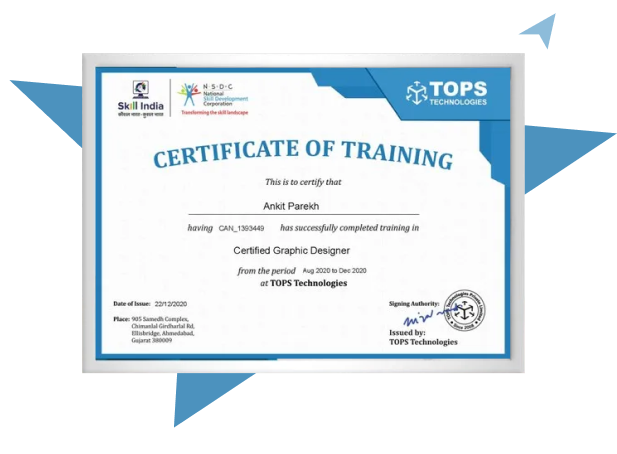
Student Reviews
Saloni Maurya
Front End DeveloperRecently joined the front-end development training program at the tops Technologies Industrial Training Center...
Read MoreShreyansh Shah
front end developerOverall, it was a good experience learning Frount-End Development at Tops Technology. The instructors were inc...
Read MoreFAQ
If you are looking for an excellent and comprehensive Front-End development course that offers live project training in India, then TOPS Technologies is the best choice. Our courses provide students with a solid foundation in web development's theoretical and practical aspects. In addition, the course teaches students how to build efficient and responsive web applications using the latest technologies.
TOPS Technologies offers the Best Front-End Development Course designed for students who want to learn how to create beautiful, engaging websites. The course introduces students to HTML, CSS, and JavaScript, then moves on to more advanced topics such as DOM manipulation and AJAX.
Throughout the Front-End Development Training, students will work on a series of live projects to help them practice what they have learned. Our Front-End development course is one of the most comprehensive courses available in India. It offers a wealth of knowledge and skills to help you develop strong web skills. Our Front-End Course is perfect for you if you are interested in learning how to design beautiful, interactive websites.
Web development is one of the most sought-after careers in India. It's no wonder, then, that there are so many companies and individuals looking for skilled Front-End developers. Here are a few tips on how to get started in this field:
1. Start by researching the different web development jobs available in India. There are plenty of opportunities to find a job that perfectly matches your skills and interests. You can search online databases like Indeed or Monster or use social media platforms like LinkedIn to connect with potential employers.
2. Network with other Front-End developers in your area. Join online forums and meetups related to web development, and connect with people who can give you advice and help you find jobs.
3. Get certified! Many companies in India require certification as part of the hiring process for Front-End developers. This includes things like HTML5 and CSS3, which are both essential skills for the position. If you have experience working with these technologies, it will be much easier to land a job as a Front-End developer in India.
If you want to start Front-End Web Development in India, enroll in a trusted Front-End Developer Institute like TOPS Technologies and get certified.
If you are looking for a Front-End Web Development Course with placement assistance in India, then TOPS Technologies is the best place. We offer comprehensive training on all aspects of Front-End Web Development, from HTML and CSS to JavaScript and jQuery. Our experienced trainers will ensure you obtain the skills and knowledge required to become a successful web developer.
Our Front-End Developer Classes offer an excellent opportunity to gain hands-on experience in a real-world setting. We provide placement assistance to find your first job as a professional web developer. So whether you are new to the web development world or have some experience but want to take your skills to the next level, TOPS Technologies is the perfect place for you.
Recent research and estimates suggest that a Front-End Web Developer's annual salary in India may go up to 8 Lakhs Indian Rupees (INR). But the pay scale may change depending on the candidate's experience and skills.
If you want to increase the likelihood of landing a high-package job, then doing a Front-End Web Development Course from TOPS Technologies can be a good way to secure your future in this field.
When finding a job in today's economy, your resume and interview skills are just as important as ever. We offer Front-End Web Development Interview Preparation here at TOPS Technologies. We know how to help you present your skills and experience in the best possible light so that you can stand out from the competition.
Our Front-End course at TOPS Technologies will teach you everything you need to know about creating a resume, conducting interviews, and networking for career opportunities. We also have access to dozens of resources, including online tools and templates, so you can make the most of your preparation.
So if you're looking for an expertly prepared candidate for your next job opportunity, look no further than TOPS Technologies – we can help you stand out from the crowd!
The skills needed to become a Front-End Web Developer vary depending on the role. However, most Front-End developers need strong coding and design skills. Additionally, they may need to know how to use various web development frameworks and tools. If you want to learn the skills of a Front-End Developer and grow in this field, enroll in Front-End Developer Classes to improve your skills.
Some of the key skills that Front-End developers typically need are:
Strong Coding Skills – A Front-End developer needs to be able to write code in a variety of languages, including HTML, CSS, and JavaScript. They also need to be knowledgeable about different web development frameworks and tools to create efficient and user-friendly websites.
Design Skills – Front-End developers need to be able to visualize what their website will look like before writing any code. They also need to be comfortable working with different types of graphic software, such as Adobe Photoshop or Illustrator.
Web Development Knowledge – A Front-End developer needs to understand the basics of web development, such as how URLs work and why content is displayed on a website. They also need to know how different web development frameworks work and which ones are best suited for certain tasks.
If you want to learn Front-End Development then enroll in our Front-End Developer Classes. By taking our classes, you will have everything you need to start your front-end development career.
The Front-End Developer Course Fees in India will differ based on the program's duration and the particular college that will be delivering the program. According to the educational establishment, the cost of one of these courses might vary from a few thousand rupees to a few lakhs of rupees.
A Front-End Developer is a professional who builds the user-facing parts of websites and applications. They create layouts, buttons, menus, and all visual elements using coding languages like HTML, CSS, and JavaScript to ensure a seamless and attractive user experience.
This course includes essential tools and languages such as HTML for structure, CSS for styling, JavaScript for interactivity, Bootstrap for responsive design, React JS for building UI components, and Git & GitHub for version control and collaboration.
Yes, the course is beginner-friendly. It starts with basic concepts and gradually advances to complex topics, helping even non-coders become proficient in front-end technologies through hands-on projects and examples.
Interview Questions
CSS controls the appearance of web pages by defining the layout, colors, fonts, and overall design, enhancing the visual experience of users.
Class selectors can target multiple elements, while id selectors are used for a unique element on a page. Class selectors are more flexible, while id selectors are specific.
AJAX allows web pages to send and receive data asynchronously without reloading, creating a smoother and faster user experience by dynamically updating content.
HTTP caching stores server responses in a browser to reduce the need for repeated requests, improving load times and minimizing server load.
Synchronous JavaScript executes tasks in order, while asynchronous JavaScript allows tasks to run independently, improving performance and responsiveness of web applications.
Latest Blogs
Front-End vs. Back-End: What’s the Difference?
On the other hand, back-end development focuses on the server-side, dealing with databases and serve...
View full BlogHow can I switch from front-end to full stack deve...
On the other hand, Full Stack Development is a broader domain that covers both the front-end and bac...
View full BlogHow to Become a Front End Developer & The Best Fro...
If you aspire to join this dynamic field, this blog will be your roadmap. It provides invaluable ins...
View full Blog

